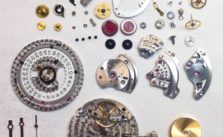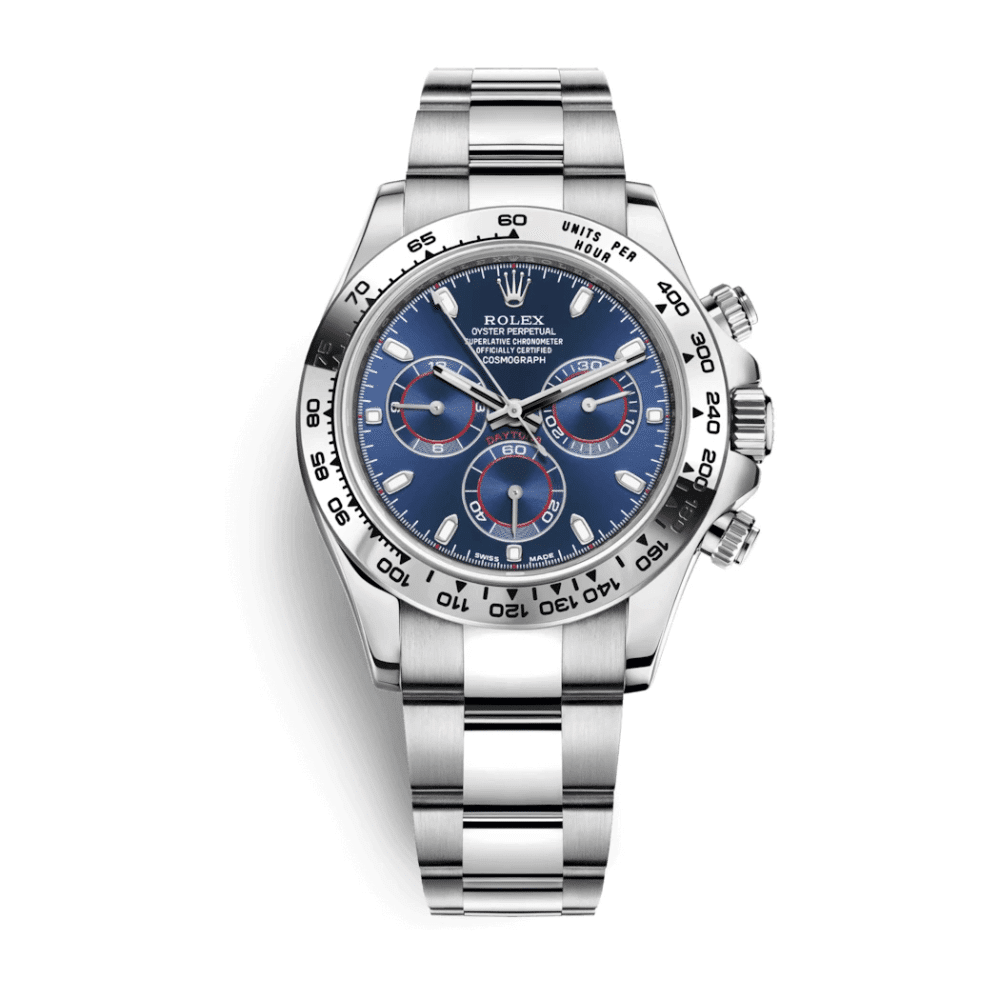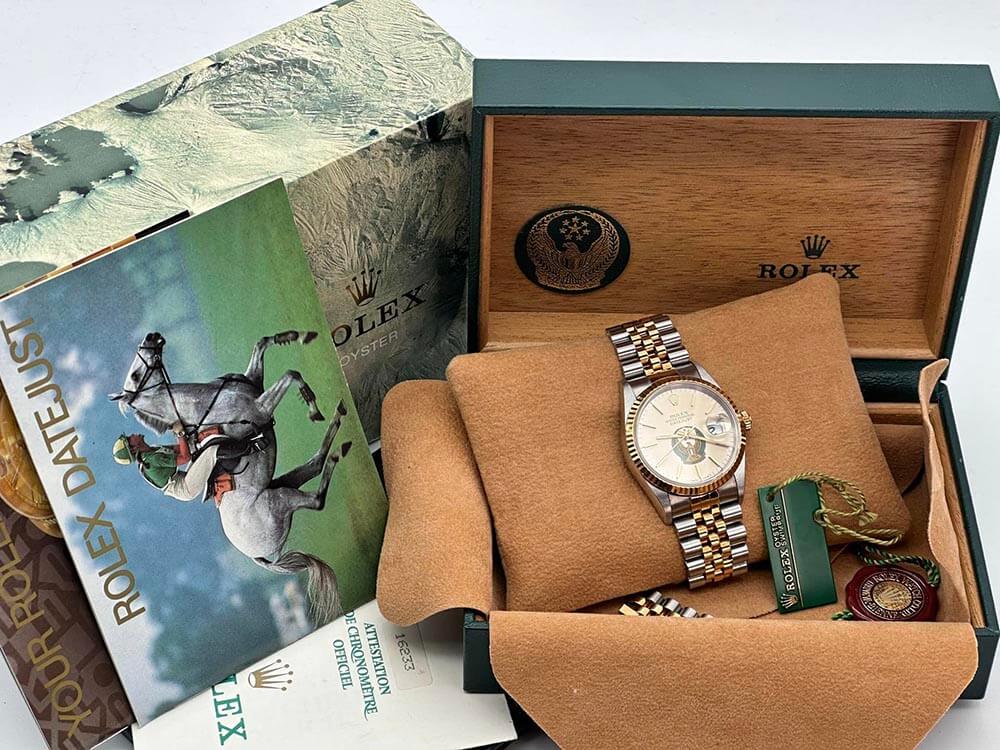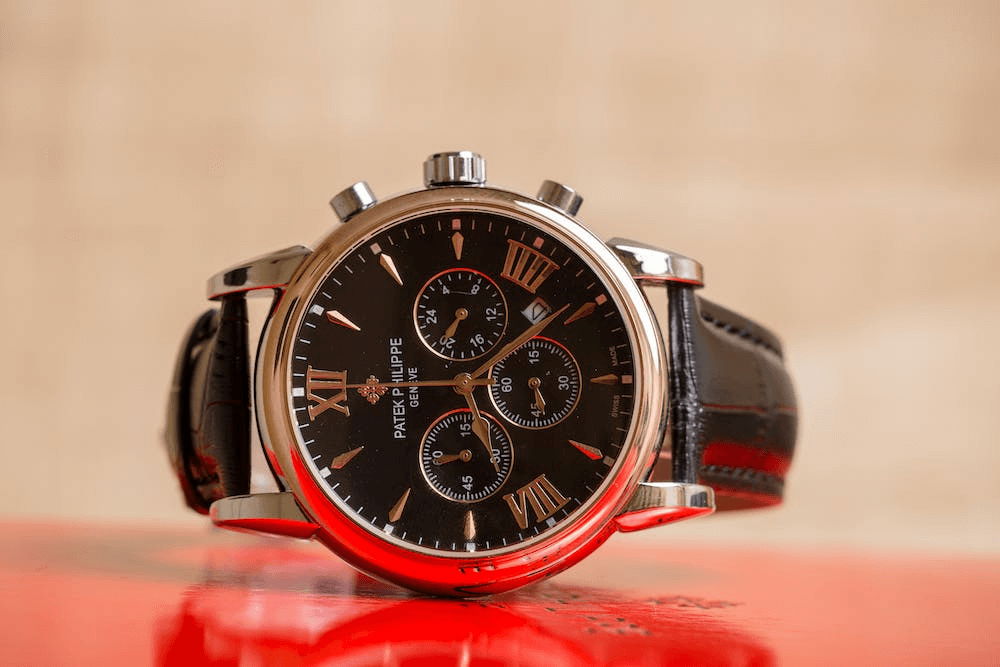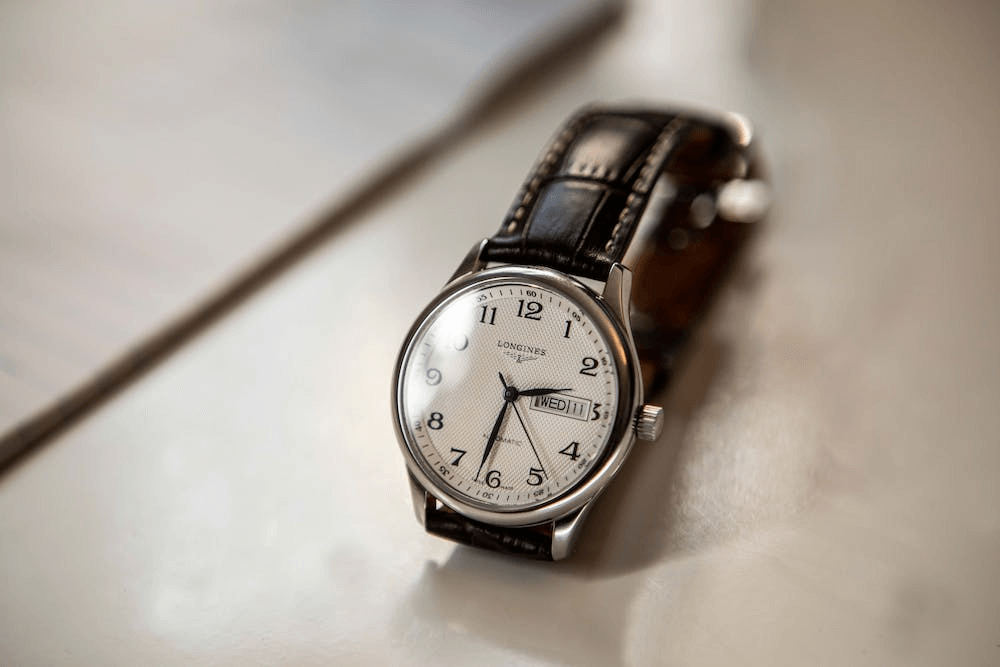D υ Ε to the nature of French clocks being show-pieces as well as
first-class time-pieces, extra care and trouble is expended during
cleaning. Fundamentally the sequence is clean, wash, dry and polish. The recommended cleaning agent is a liquid metal polish. If this is applied with a stiff watch brush, a very fine finish can
be achieved. Shake some metal polish into a shallow tin and dip the end of
the brush into it. The part to be cleaned is held in the hand in a piece of soft
cloth such as an old handkerchief. Brush inside the bars of the wheels with a side motion so that the grain will follow the
contour of the aperture. Take extreme care not to knock the pivots with the brush
because apart from being very fine they are also quite hard and
easily snap off. When brushing the teeth make sure that the brush movement
is made square with the wheel to ensure that the bristles reach the
base of the teeth. Be very meticulous with the gearing and round the wheels two or three times. When brushing the sides keep the brush movement always in the same direction. Never cross the grain. Plates and other flat pieces are similarly treated, the grain always flowing with the length of the part. To clean the oil sinks, place a hand-drill in the vice and secure in the chuck a short length of pegwood shaped like a flat drill. Cut a small square of chamois leather, smear it with a spot of metal polish and place it over the oil sink. Bring the work up to
the pegwood stick and rotate the hand-drill at a good speed
causing the chamois leather to spin in the sink.
When all the brush work is finished, take a leather buff (supplied for the purpose) smear a very little metal polish over its
surface and buff all the plates, bridge pieces, etc., retaining the
same direction of grain.
All these parts now have to be washed in a cleaning fluid. Lay
them in a pan of suitable size, pour the fluid over them and with
a 1/2-in. varnish brush remove every trace of the metal polish.
As each part becomes washed lift it out of the tray and lay it
on folded newspaper to absorb the surplus fluid. The parts are
then dried in a linen cloth. Polishing is carried out with a soft watch brush charged with
billiard chalk. All the parts are brushed as before, but of course,
not so energetically, and for this operation they are held in tissue
paper. The oil sinks are polished using the same method by which they
were cleaned only this time dry chamois leather is used. Finally, all pivot holes, threaded and plain holes and pinion
leaves are cleaned out and rubbed over with a pointed pegwood
stick. When cleaning out the pivot holes the pegwood stick is
inserted at both ends and rotated. Any dirt on the stick after
withdrawal is shaved off and the stick is inserted again. This
process continues until all traces of dirt have been removed.
As each part becomes finished it is put in a box away from
dust. Blued steel screws that have become marked should be restored to their original condition. This is best done by spinning the screw in a lathe. Remove the blueing and the marks with a deadsmooth file, polish with a piece of very fine emery paper and finish with a flat burnisher. The screw head must not be touched by hand. Clean out the
screwdriver slot and remove the screw from the chuck with tweezers. There are two methods of blueing and preservation. One is to place the screws on a blueing pan and move it about in
a spirit flame until the screw heads turn the right colour and then
tip them into a tray containing thin oil. The screws are then
washed in cleaning fluid. The other method is to place them, head uppermost, in a tray
of hot silver sand supported over a flame. When the head has turned blue the screw is lifted out with an old pair of tweezers and given one coat of colourless lacquer with a 1/2-in. flat lacquer brush.

